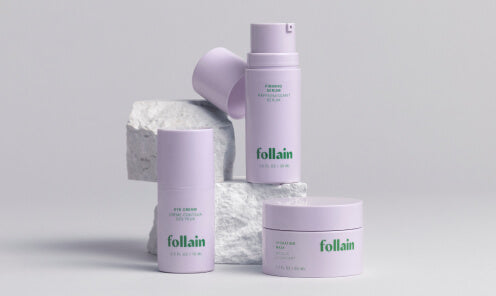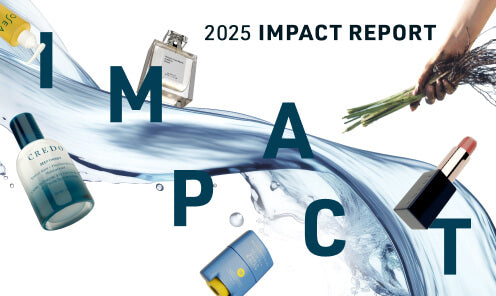By: Dr. Elsa Jungman, Clean Beauty Council Member - Skin Research Expert
Dr. Elsa Jungman holds a Ph.D. in skin pharmacology and managed skin delivery evaluation for L'Oréal. Today, she is developing her clean and science-backed skincare line ELSI and works with startups specializing in skin health, biotechnology and the microbiome.
How do you know what exactly goes into your bloodstream?
There’s a repeated statistic, “60% of what goes on your skin goes into your bloodstream”.
Makes sense that people wonder: How much of what is in my skincare goes into my body? An important question given that women in the US apply on average 126 unique ingredients per day to our skin. The real answer is: it depends.
Researchers have studied absorption of cosmetic ingredients for decades, either to understand the efficacy of the ingredients, or it’s potentially toxicity. So let’s break it down:
1. Not everything you apply on the skin will go into your bloodstream
First, healthy skin is a strong barrier - so be careful if your skin is damaged. Just like a brick and mortar wall, your healthy skin helps to protect our body from external hazard.
The skin surface is also lipophilic (it likes oil), so compounds that are soluble in oil theoretically tend to diffuse less. Generally an ingredient that is small and hydrophilic (likes water) will pass more through the skin (a good example is caffeine) than an ingredient that is large and lipophilic. Have in mind this observations (made for example for parabens) have to be pondered as the other ingredients in the formulation play a major in driving the compound absorption.
However your skin can be altered when it’s unhealthy because of skin conditions, sun burn, or irritations. The loss of protective structure has been shown to lead to more permeability.
2. What you read on the label is not necessarily what will go through your skin
The name you read on an ingredient label is not necessarily what a researcher would find in your bloodstream. That is because many compounds are metabolized once they penetrate the skin, meaning they are biologically transformed into another chemical.
So when scientist studies an ingredient’s potential absorption into the skin, they also have to take into account its potential metabolites.
Also many products are unstable, meaning that they can change when they’re in contact with light or oxygen. A good example is retinol that is usually recommended to be applied at night because of its instability.
So, the reality is a little complex than what you read seemingly everywhere. In general, only a small quantity of a compound applied to healthy, intact skin will penetrate into the skin. Remember that often the ingredient you read on the label might be transformed once in your skin and that most active ingredients are usually formulated in very small “cosmetic” concentrations, so it is really a tiny fraction that can potentially penetrate.
References:
Menon, G. K., Cleary, G. W., & Lane, M. E. (2012). The structure and function of the stratum corneum. International Journal of Pharmaceutics, 435(1), 3–9. https://doi.org/10.1016/j.ijpharm.2012.06.005
Chiang, A., Tudela, E., & Maibach, H. I. (2012). Percutaneous absorption in diseased skin: an overview. Journal of Applied Toxicology, 32(8), 537–563. https://doi.org/10.1002/jat.1773
Merle, C., Laugel, C., & Baillet-Guffroy, A. (2010). Effect of UVA or UVB Irradiation on Cutaneous Lipids in Films or in Solution. Photochemistry and Photobiology, 86(3), 553–562. https://doi.org/10.1111/j.1751-1097.2009.00690.
Tolleson, W. H., Cherng, S. H., Xia, Q., Boudreau, M., Yin, J. J., Wamer, W. G., … Fu, P. P. (2005). Photodecomposition and phototoxicity of natural retinoids. International Journal of Environmental Research and Public Health, 2(1), 147–155. https://doi.org/10.3390/ijerph2005010147
Jungman, E., Laugel Cécile, & Baillet-Guffroy Arlette. (2013). Assessing the Safety of Parabens: Percutaneous Penetration and Risk Analysis. Retrieved from https://www.cosmeticsandtoiletries.com/research/biology/Assessing-the-Safety-of-Parabens-Percutaneous-Penetration-and-Risk-Analysispremium-231908511.html
EWG. (2004). Exposures add up – Survey results | Skin Deep® Cosmetics Database | EWG. Retrieved August 20, 2018, from https://www.ewg.org/skindeep/2004/06/15/exposures-add-up-survey-results/#.W3uarNhKicZ













